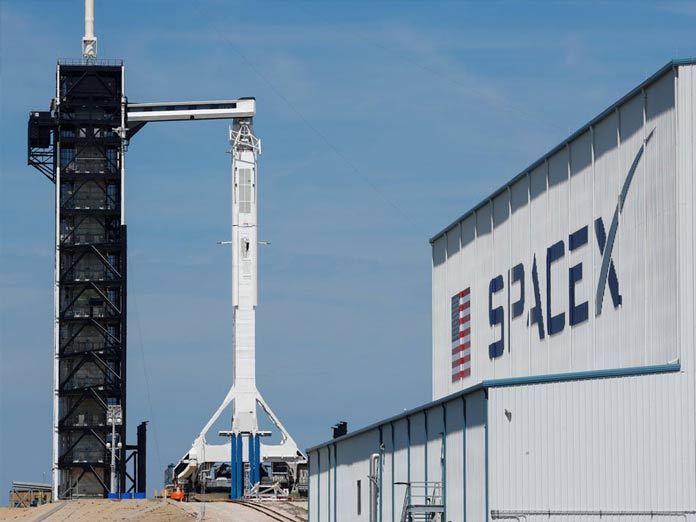SpaceX launches unmanned US space capsule to space station

A SpaceX rocket with an unmanned crew capsule blasted off on Saturday for the International Space Station, in a key milestone for Elon Musks space company and NASAs longdelayed goal to resume human spaceflight from US soil later this year
Cape Canaveral, Florida: A SpaceX rocket with an unmanned crew capsule blasted off on Saturday for the International Space Station, in a key milestone for Elon Musk's space company and NASA's long-delayed goal to resume human spaceflight from US soil later this year.
LIFTOFF! The next big leap in a new chapter of U.S. human spaceflight systems has left the pad. @SpaceX’s #CrewDragon demo flight will be the 1st commercially-built & operated American spacecraft designed for humans to dock at the @Space_Station. Watch: https://t.co/Fm5NQSfAXJ pic.twitter.com/YoiOf67kQL
— NASA (@NASA) March 2, 2019
SpaceX's 16-foot-tall (4.9 meter) Crew Dragon capsule, atop a Falcon 9 rocket, lifted off from Florida's Kennedy Space Center at 2:49 a.m. (0749 GMT), carrying a test dummy nicknamed Ripley.
.@SpaceX's #CrewDragon has separated from its rocket as the spacecraft continues to head to the @Space_Station on its debut flight. Tune in and watch live: https://t.co/gjn4a2dZg4
— NASA (@NASA) March 2, 2019
The capsule successfully separated from the rocket about 11 minutes later, sparking cheers in the control room, and began its journey to the space station.
The station's three-member crew was expected to greet the capsule, carrying 400 pounds (181 kg) of supplies and test equipment, early Sunday morning, NASA said.
Falcon 9 booster has landed on the Of Course I Still Love You droneship—SpaceX’s 35th successful landing of a rocket booster pic.twitter.com/cDvKpoOwrq
— SpaceX (@SpaceX) March 2, 2019
During its five-day stay, U.S. astronaut Anne McClain and Canadian astronaut David Saint-Jacques will run tests and inspect Crew Dragon's cabin.
NASA has awarded SpaceX and Boeing Co $6.8 billion to build competing rocket and capsule systems to launch astronauts into orbit from American soil for the first time since the U.S.
Space Shuttle was retired from service in 2011.
Either SpaceX or Boeing will have bragging rights as the first private company to launch humans into space on its own rocket, although plans call for rockets built by both companies to carry astronauts into space.
Crew Dragon will autonomously dock with the @space_station at approximately 6:00 a.m. EST on March 3 pic.twitter.com/znptJuDCY7
— SpaceX (@SpaceX) March 2, 2019
The launch systems are aimed at ending US reliance on Russian rockets for rides to the $100 billion orbital research laboratory, which flies about 402 kilometres above Earth, at about $80 million per ticket.
While Saturday's SpaceX test mission is a crucial step in the oft-delayed project, there are questions about whether NASA can achieve its 2019 flight goal of manned flight.
Reuters reported on February 21 that SpaceX and Boeing both must address significant design and safety concerns before they can fly humans.
Early on Friday, Musk, who is also chief executive officer of electric carmaker Tesla Inc, tweeted a photo of the inside of Crew Dragon capsule with Ripley strapped inside.
SpaceX said the spacesuit for Ripley, apparently a reference to the protagonist in the science fiction movie "Alien", has been embedded with sensors around its head, neck, and spine to monitor how a flight would feel for a human.















